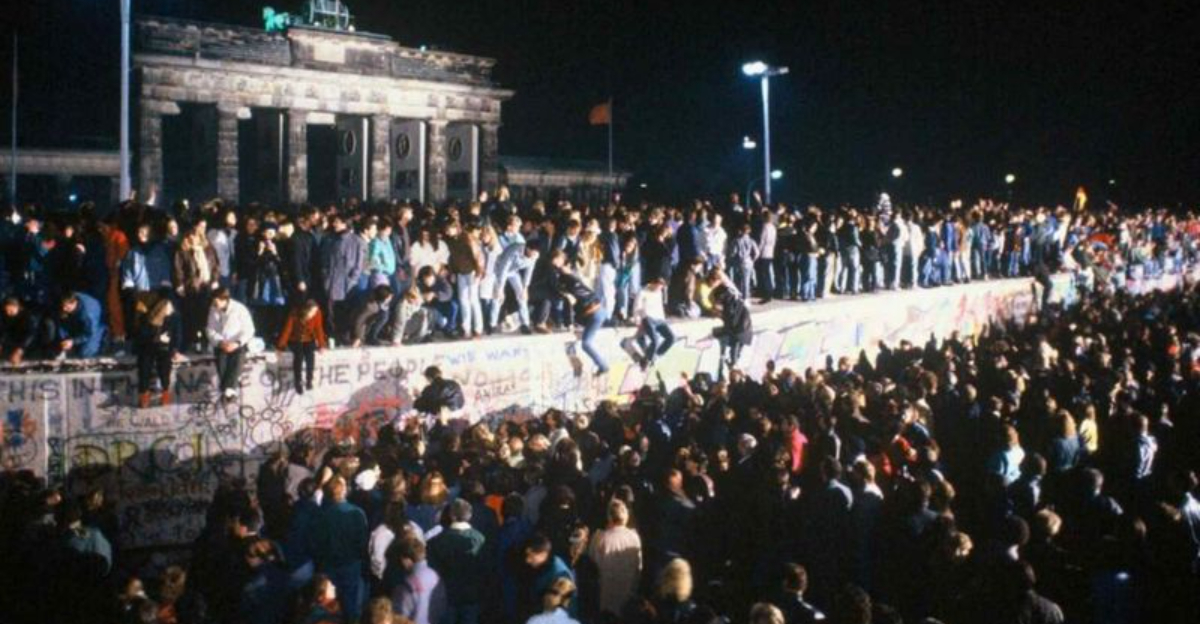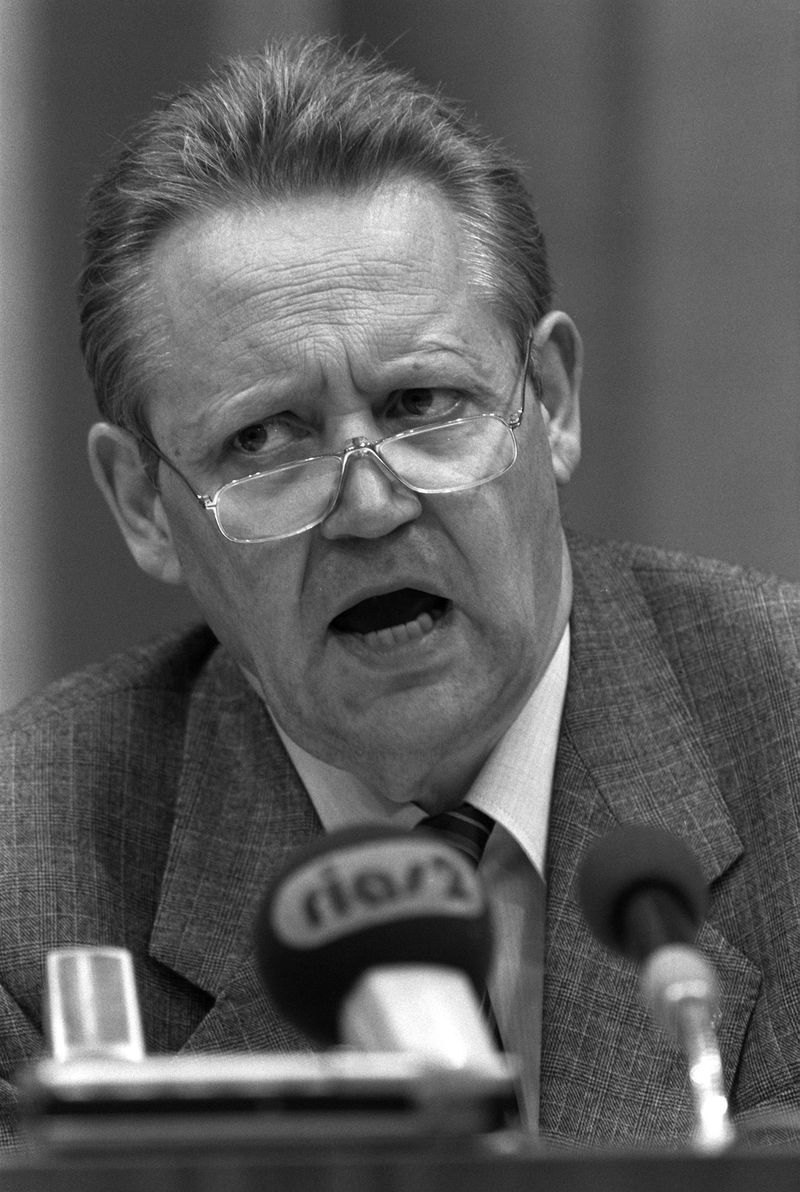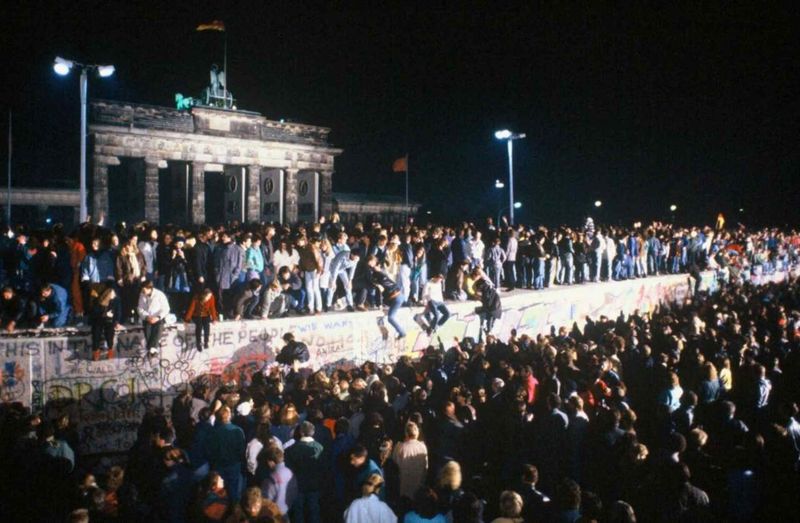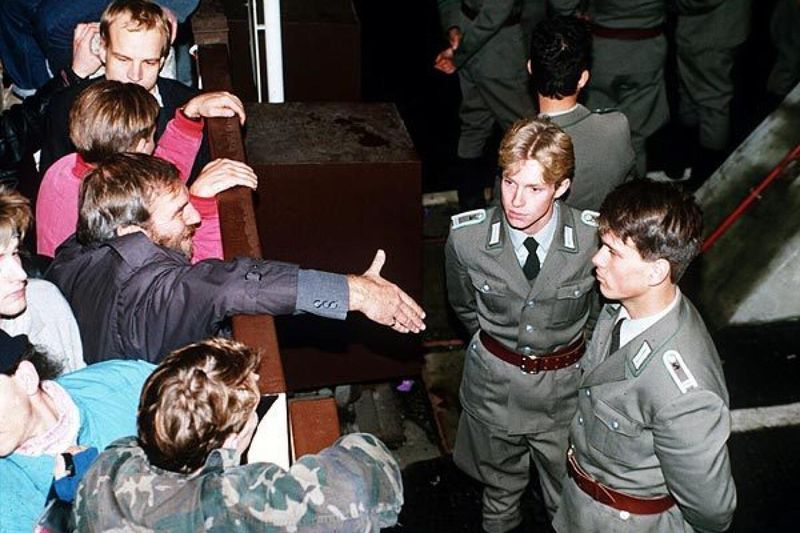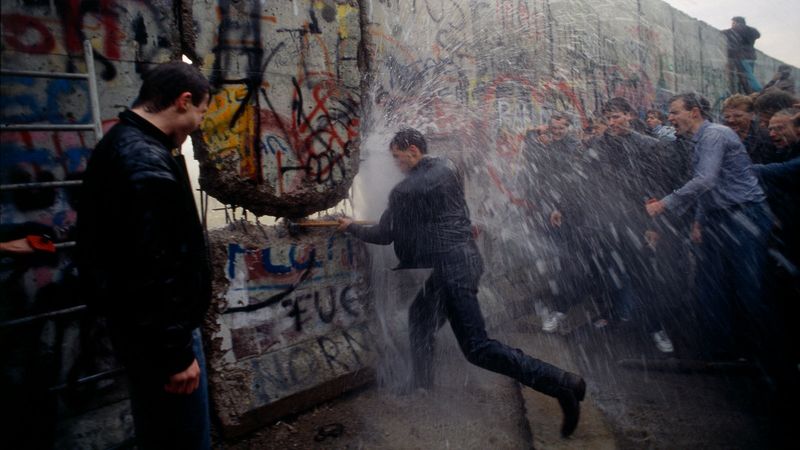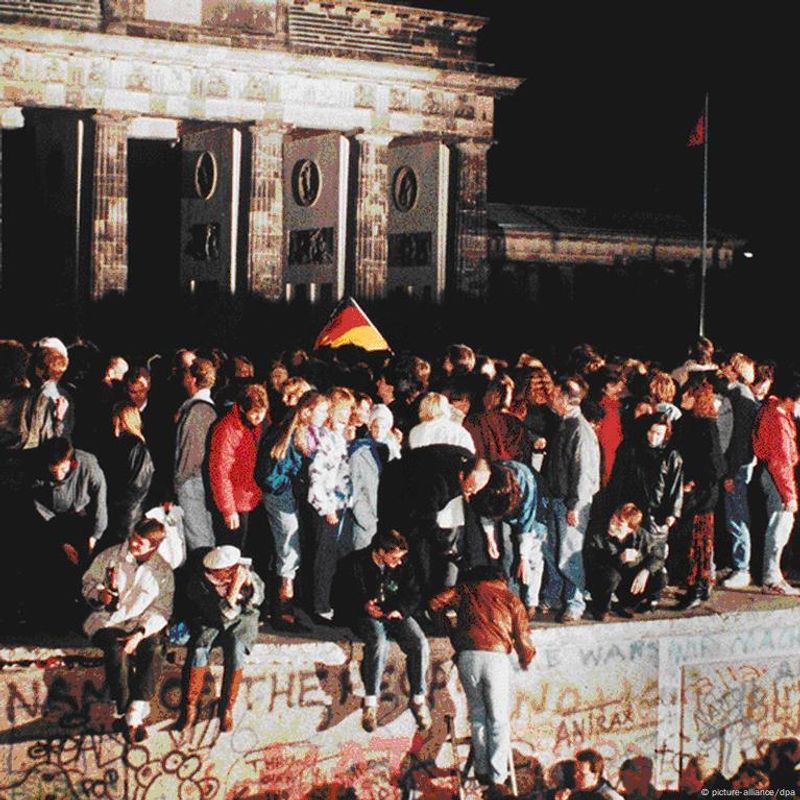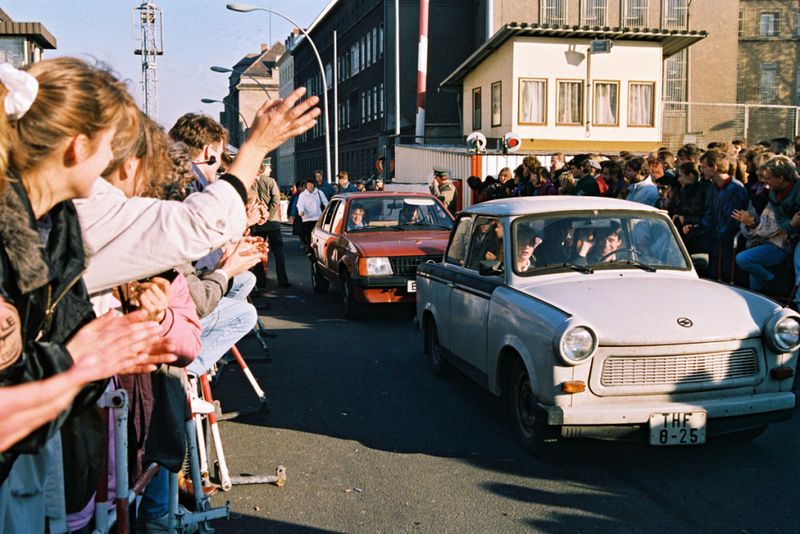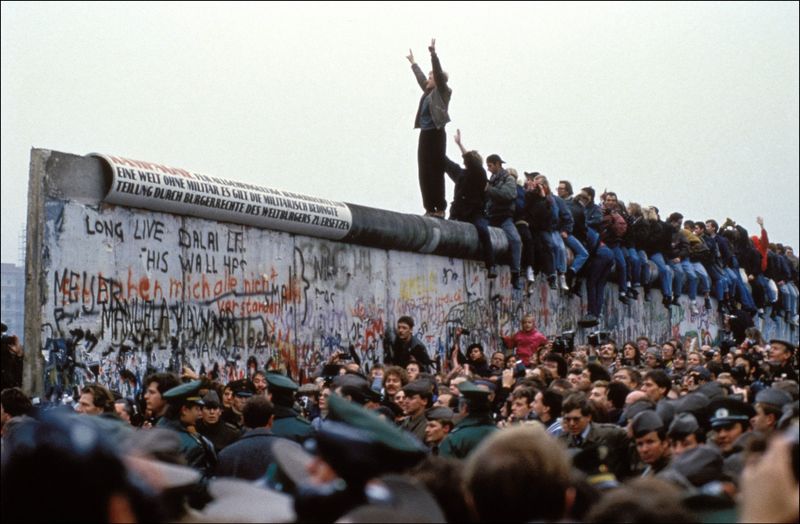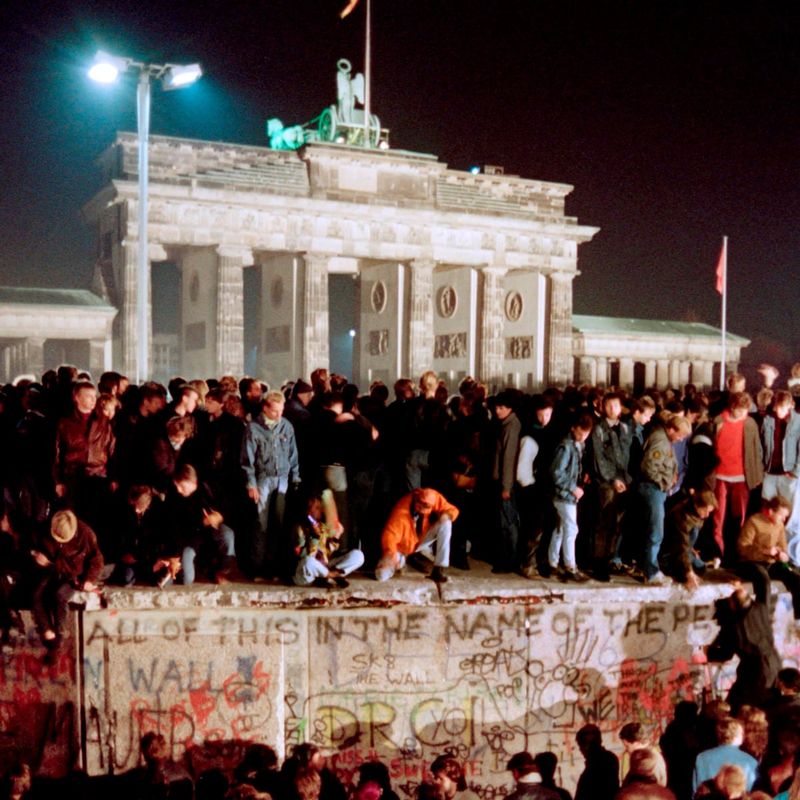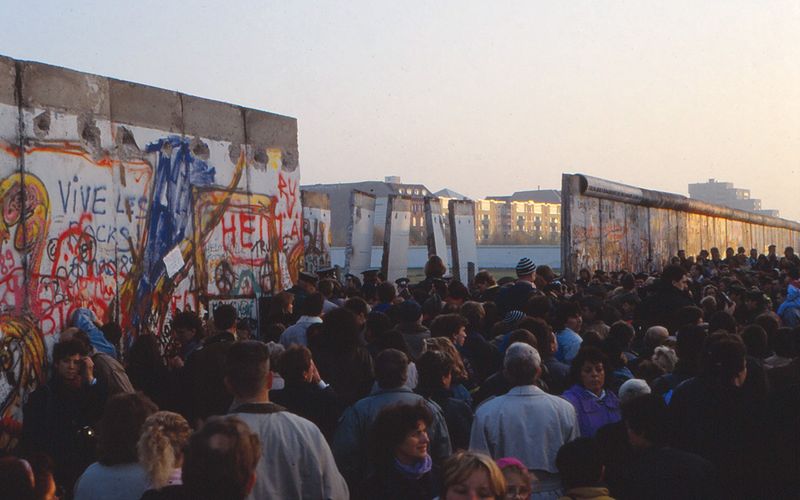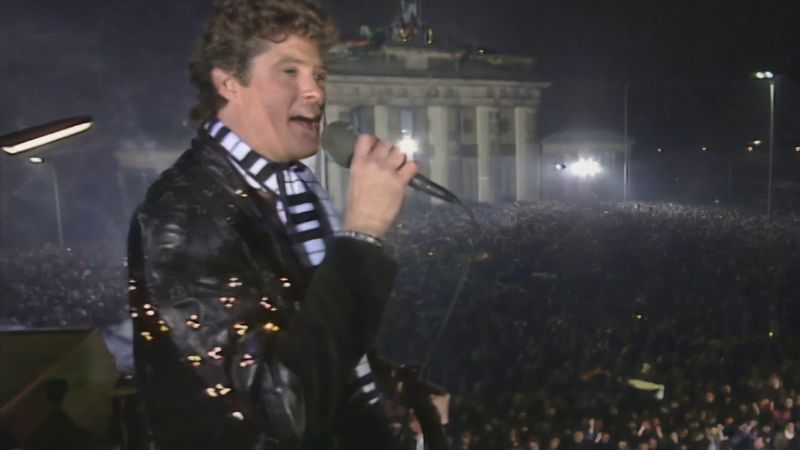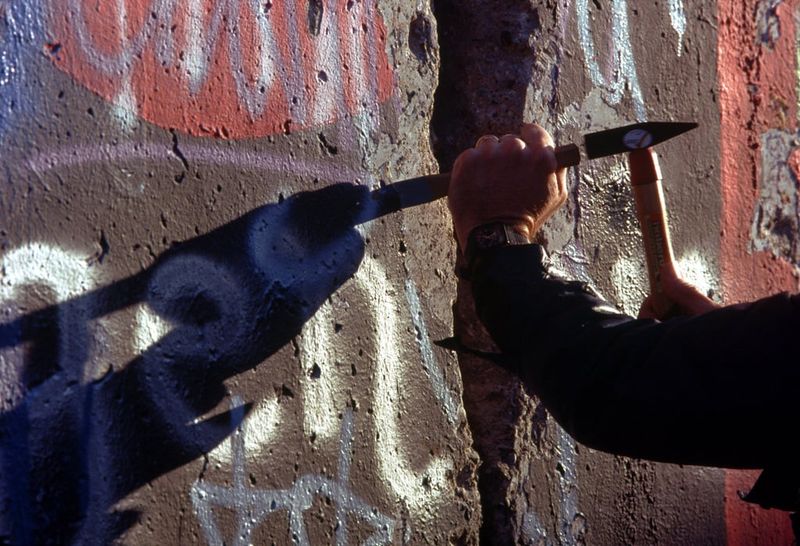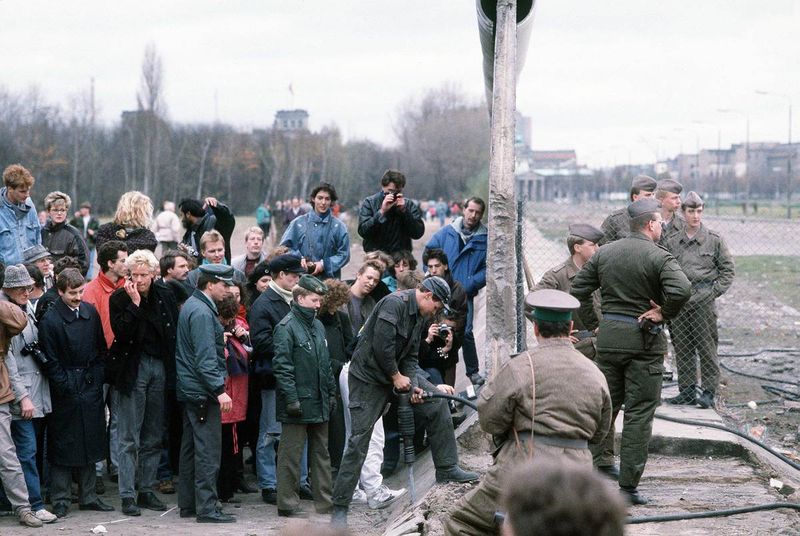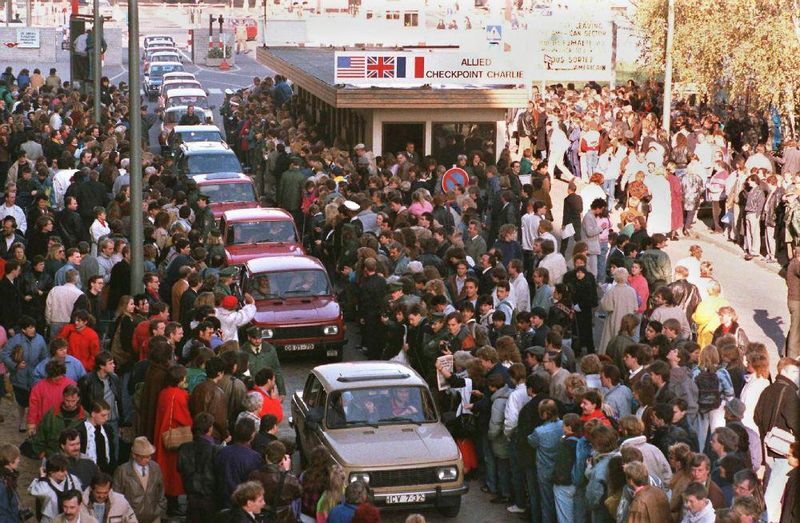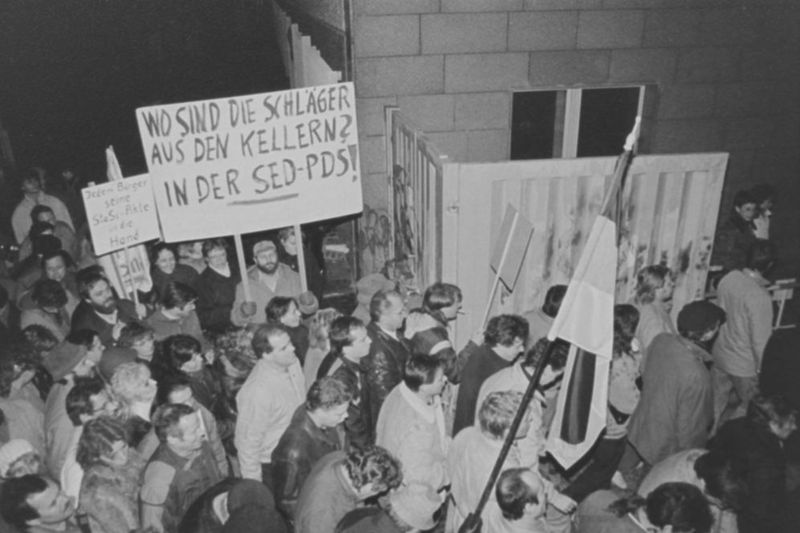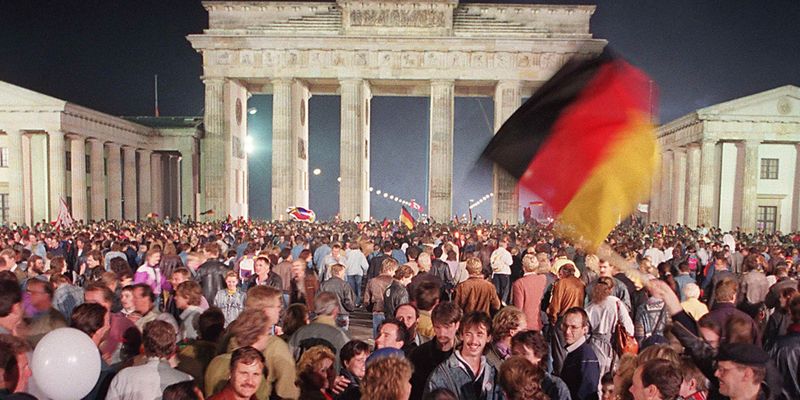The day the Berlin Wall fell is etched in history as a symbol of freedom and unity, marking the end of an era defined by division and tension. On November 9, 1989, an erroneous announcement turned the tide of history, leading to a night of unprecedented celebration and change.
From spontaneous reunions to the gradual crumbling of the Cold War barrier, this event reshaped the world in ways that still resonate today.
The following 15 facts delve into the powerful moments and emotions that characterized the fall of the Berlin Wall, an event that continues to inspire hope and unity.
1. The Fall Was Triggered by a Botched Announcement on Live TV
Günter Schabowski, an East German official, made a fateful mistake on live television. He announced that travel restrictions would be lifted “immediately,” although no such order was finalized. The ramifications were immediate and immense.
Berliners, both East and West, took this slip as a green light for change. The news spread like wildfire. The spontaneous nature of the announcement shocked the world and triggered a massive public response.
By the time authorities tried to correct the mistake, the momentum was unstoppable. History had been irrevocably altered by an unplanned utterance during a routine press briefing.
2. Thousands Rushed to the Border Crossings That Night
By 9 p.m. on November 9, 1989, thousands of Berliners gathered at the Berlin Wall’s border crossings. Places like Bornholmer Straße saw swelling crowds, eager to cross into West Berlin.
The air was electric with anticipation and confusion. Families, friends, and even strangers came together in a shared moment of history.
As the pressure mounted, the guards found themselves in a dilemma. The absence of clear instructions created tension. Yet, the sheer will of the people was undeniable. It was a night that would be etched into the memory of those who witnessed it.
3. Border Guards Had No Orders — and No Idea What to Do
Amid the chaos that night, East German border guards were left without guidance. There were no official orders on how to handle the surging crowds, leading to widespread confusion.
Harald Jäger, a daring border commander, ultimately took matters into his own hands. Defying protocol, he ordered the gates to open, allowing the flood of people to pass through.
This bold decision marked a turning point. The guards’ lack of preparedness reflected the unanticipated nature of the event. The world watched as a barrier that stood for decades began to falter under its own weight.
4. People Brought Hammers and Pickaxes
As news of the Wall’s opening spread, Berliners from both sides took matters into their own hands. Armed with hammers and pickaxes, they descended upon the Wall, eager to dismantle the symbol of division.
This act of defiance and liberation quickly turned into a festive occasion. Pieces of the Wall became prized souvenirs and mementos of change.
The scene was one of jubilation and determination. Each crack and chip symbolized newfound freedom. The physical act of tearing down the Wall underscored the emotional and political barriers being overcome at that moment.
5. Families Reunited for the First Time in Decades
For many, the fall of the Berlin Wall represented more than just political change. It was a deeply personal moment as families separated for decades were finally able to reunite.
Tears, laughter, and embraces filled the night air. It was a poignant reminder of the human cost of the Wall and the enduring spirit of those who lived through its presence.
These reunions highlighted the Wall’s impact on daily lives. The joy of coming together after years of separation was palpable, adding a heartwarming dimension to the historical event that unfolded.
6. West Berliners Greeted the East with Beer, Flowers, and Music
As East Berliners poured through the checkpoints, the reception from the West was overwhelmingly positive. West Berliners greeted their counterparts with beer, flowers, and music, turning the crossing into a celebration.
It was a spontaneous outpouring of joy and camaraderie. Strangers became friends as the barriers that separated them for so long dissolved.
This warm welcome was a testament to the shared desire for unity and peace. The festive atmosphere underscored the sense of solidarity and hope that permeated the air, making the historic night even more memorable.
7. It Wasn’t Planned — No One Knew It Would Happen That Day
Unlike most major historical events, the fall of the Berlin Wall wasn’t orchestrated. It was an unplanned culmination of smaller actions and miscommunications.
No official decision or speech marked the event, only a series of unexpected developments. The spontaneity added to the drama and excitement of the evening.
For those present, the realization that they were part of history was both exhilarating and surreal. The lack of planning didn’t diminish the significance. Instead, it highlighted the power of the people and the unpredictable nature of history.
8. The Cold War Didn’t End Overnight, But the Symbol Crumbled
The fall of the Berlin Wall signified a profound shift in global politics. Though tensions lingered for years, the symbolic end of the Cold War began that night.
The Wall’s collapse was a visual representation of ideological barriers breaking down. For many, it marked the psychological end of an era.
The jubilant scenes were broadcast worldwide, reinforcing the notion that change was not only possible but inevitable. The emotional impact was immense, as the world watched a new chapter in history unfold, heralding an era of hope and transformation.
9. Western News Outlets Picked It Up Immediately
Within hours of the first breaches, Western news outlets like CNN and BBC began broadcasting the astonishing scenes from Berlin. The world was captivated by images of Berliners dancing on the Wall.
The real-time coverage brought the historic moment into living rooms across the globe. It was a testament to the power of media to bridge distances and connect people.
This immediate dissemination of news also accelerated international reactions. The fall of the Wall was not just a local event; it was a global phenomenon, demonstrating the interconnectedness of the modern world.
10. David Hasselhoff Sang “Looking for Freedom” on the Wall Weeks Later
David Hasselhoff, an unexpected cultural icon in Germany, performed on the Berlin Wall on New Year’s Eve 1989. Singing “Looking for Freedom,” he wore a jacket adorned with flashing lights.
The performance became an iconic moment, blending pop culture with political change. It symbolized freedom and unity in a unique and memorable way.
While some might find it quirky, for many Germans, Hasselhoff’s performance was a celebration of newfound freedom. It highlighted the blending of cultures and the joyous aftermath of a historical turning point.
11. Chipping at the Wall Became a Tourist Craze
Soon after the Wall’s fall, chipping away at its remnants became a popular activity. People from all over the world arrived to take part in dismantling the Wall and collecting pieces.
These “Mauerspechte” (Wall woodpeckers) added a playful element to the serious political shift. The fragments became coveted souvenirs, each piece a tangible reminder of the Wall’s fall.
The craze reflected a global fascination with the event. It was a unique way for people to connect with history, turning an otherwise somber symbol into a source of curiosity and engagement.
12. It Started in Berlin, But Shook the Whole Eastern Bloc
The fall of the Berlin Wall had a domino effect that rippled through the Eastern Bloc. Revolutions in Czechoslovakia, Romania, and Bulgaria followed, as the tide of freedom spread.
The once-solid stronghold of communism began to crumble. The Wall’s collapse inspired hope and action across Eastern Europe.
It was a catalyst for change, proving that oppressive regimes could be challenged. The spirit of resistance and the desire for freedom transcended borders, igniting a series of transformations that reshaped the political landscape of the region.
13. Checkpoint Charlie Became a Party Zone
Once a place of tension and intrigue, Checkpoint Charlie was transformed overnight into a hub of celebration. Crowds gathered, dancing and painting graffiti on what was once a symbol of separation.
The transformation epitomized the shift from division to unity. The checkpoint that once stood as a gateway between worlds now became a site of joy.
The party atmosphere at Checkpoint Charlie was a microcosm of the larger changes sweeping across Berlin. It was a fitting tribute to the power of hope and the human spirit’s resilience in the face of adversity.
14. Stasi Files Were Stormed
In the days following the Wall’s fall, East Germans stormed the headquarters of the Stasi, the notorious secret police. Their goal was to prevent the destruction of documents that detailed surveillance activities.
The storming was a bold move to reclaim personal freedoms and expose past injustices. Files containing decades of betrayal and deception were uncovered.
This act was not just about accessing information; it was about reclaiming dignity and uncovering truths. It marked a significant step towards transparency and accountability, reflecting the changing tide in East Germany.
15. Germany Would Reunify Within a Year
On October 3, 1990, less than a year after the Wall fell, East and West Germany officially reunified. The impossibility of the past became the reality of the present.
Reunification was a testament to resilience and the power of collective will. It marked the culmination of a journey from division to unity.
The celebrations were grand, as people from both sides embraced the new beginning. It was a moment of triumph and hope, signifying not just the unification of a country, but the healing of a divided people.
